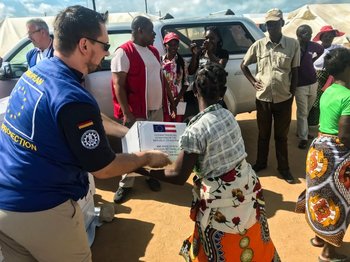I spent several months diarising my decision-making and -taking in 2018 as part of the research behind ALNAP’s recent study Beyond Assumptions. Here, I encountered several recurring challenges as I tried to take stock, each of which presented interesting insights of their own.
The trees
Isolating and identifying specific decision-making moments that could be attributed to a particular course of action proved particularly challenging. Instead, what quickly became visible through my diarised reflections, was the dominant nature of the broader contexts and processes within which decision-making took place. The aim to separate out actual decision-making moments (the trees) from the messy, noisy and very complex realities surrounding them (the wood), frequently resembled an everlasting and futile Sisyphean quest.
This insight is normally hard to arrive at in the operational context of humanitarian assistance due to its hectic pace, focus on quick response and, in turn, relatively limited time for retrospective reflection and analysis. As a project manager in the humanitarian field, there is often an expectation that the flow of events takes place in a clear, linear and chronological structure, very much influenced by the straightforward sequencing logic of a log frame. One singular decision in a very specific place leads to a particular course of action which leads to another decision-making moment further down the line and so forth, eventually arriving at a particular result.
In contrast to that, by reflecting on my diarised entries I found that the highly networked, interlinked and coordination-based nature of humanitarian aid work, within and between different types of actors and organisations, made it difficult to pick out definitive decision-making moments from the wider process in which those decisions were formed, taken and implemented. I got the impression that decision-making moments seemed to stretch out elastically over large periods of time, dispersed across multiple, different arenas of processes, actors and geography.

'This insight is normally hard to arrive at in the operational context of humanitarian assistance due to its hectic pace, focus on quick response and, in turn, relatively limited time for retrospective reflection and analysis.' Photo credit: Daniel Stark
The ongoing shift of humanitarian action towards increasingly urban landscapes will only strengthen and heighten this due to their more complex and inter-connected nature and the higher number of actors and stakeholders working closely next to each other. An issue requiring a specific decision to be taken in one particular group or context could periodically recur in a different format somewhere else. These challenges seemed to speak to Weiss and Hoffman’s notion of the ‘fog of humanitarianism’, and the opacity and uncertainty they describe as typical to operational conditions of humanitarian assistance.
The babushka doll effect
Getting to grips with the nature of programmatic and project-based decision-making in the turbulent context of humanitarian work, I found the decision-making processes to be aggregative and cumulative by nature. Like a Russian babushka doll, singular decisions could actually be made up of entire sub-structures of mini-decisions, each with their own distinct, but interrelated, processual history. It frequently seemed senseless to focus on one decision in an isolated sense, without pointing to previous trajectories of decision-making in which it occurred. Thus, decisions made in an operational context were often not homogenous, discrete or unitary but consisted of a wider, diffuse and compartmentalised structure of smaller task-related decision-making.
These two broad insights made me reflect on the importance of keeping the wider, operational context of humanitarian crises in mind, and the constraints and limitations it can impose on decision-makers. It made me increasingly aware of crucial need to understand this context when working to build relevant and flexible responses, a need which is still not properly prioritised and appreciated in operational decision-making processes.

'Like a Russian babushka doll, singular decisions could actually be made up of entire sub-structures of mini-decisions, each with their own distinct, but interrelated, processual history.' Photo credit: Jo Zimny
Despite vigorous efforts by humanitarian actors to create and curate repositories of information to pool institutional memory and move away from the sector’s traditional presentism, the operational context continues to pose formidable challenges to this.
The operational context is beset by an often-intense pace, a focus on responsiveness, high staff turnover, short time-frames and funding cycles, as well as a proliferation of diverse actors and coordination networks. These operating conditions, inherent in Weiss and Hoffman’s ‘fog’, pose considerable structural challenges for aid workers to nurture more comprehensive and holistic institutional mindsets that can adapt to and absorb the complex realities of highly complex, networked and interrelated decision-making contexts.
In this sense, from a practitioner’s perspective, ALNAP’s research presented a rare and very welcome opportunity for me to focus and reflect on the challenges I face in professional decision-making day to day. I particularly valued the study’s focus on different types of decision-making processes and the different situations where they might be suitable as well as the recommendation that consciously choosing which one to use would improve the quality of decision-making.

'The operational context is beset by an often-intense pace, a focus on responsiveness, high staff turnover, short time-frames and funding cycles, as well as a proliferation of diverse actors and coordination networks.' Photo credit: European Union
Marc Herzog participated in ALNAP's research on operational decision-making in humanitarian contexts which used an innovative diary methodology to examine the conditions within which decisions get made, and which decision-making approaches might be best suited for different settings. Marc registered 30 number of decisions from 22 June to 24 October 2018. This study would not have been possible without the diarised contributions of our 55 participants.